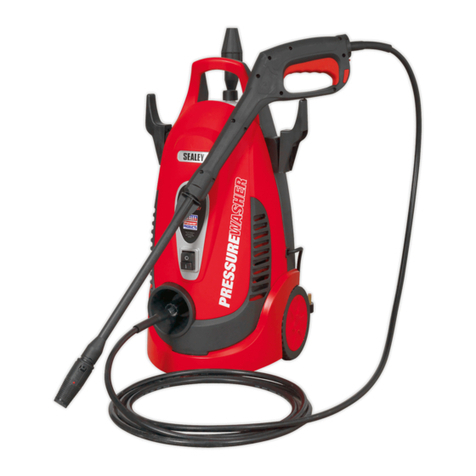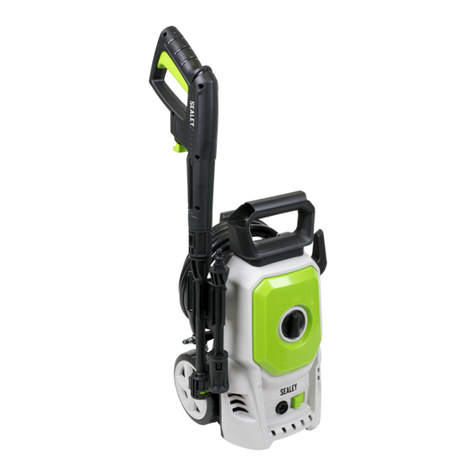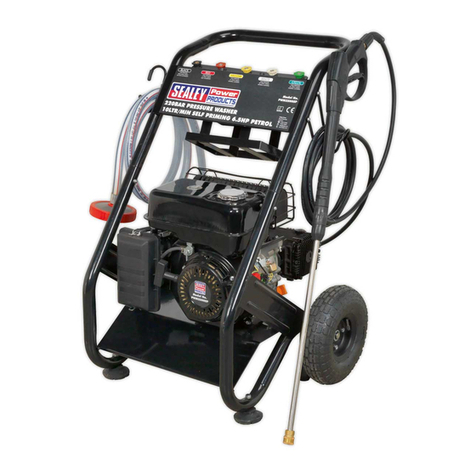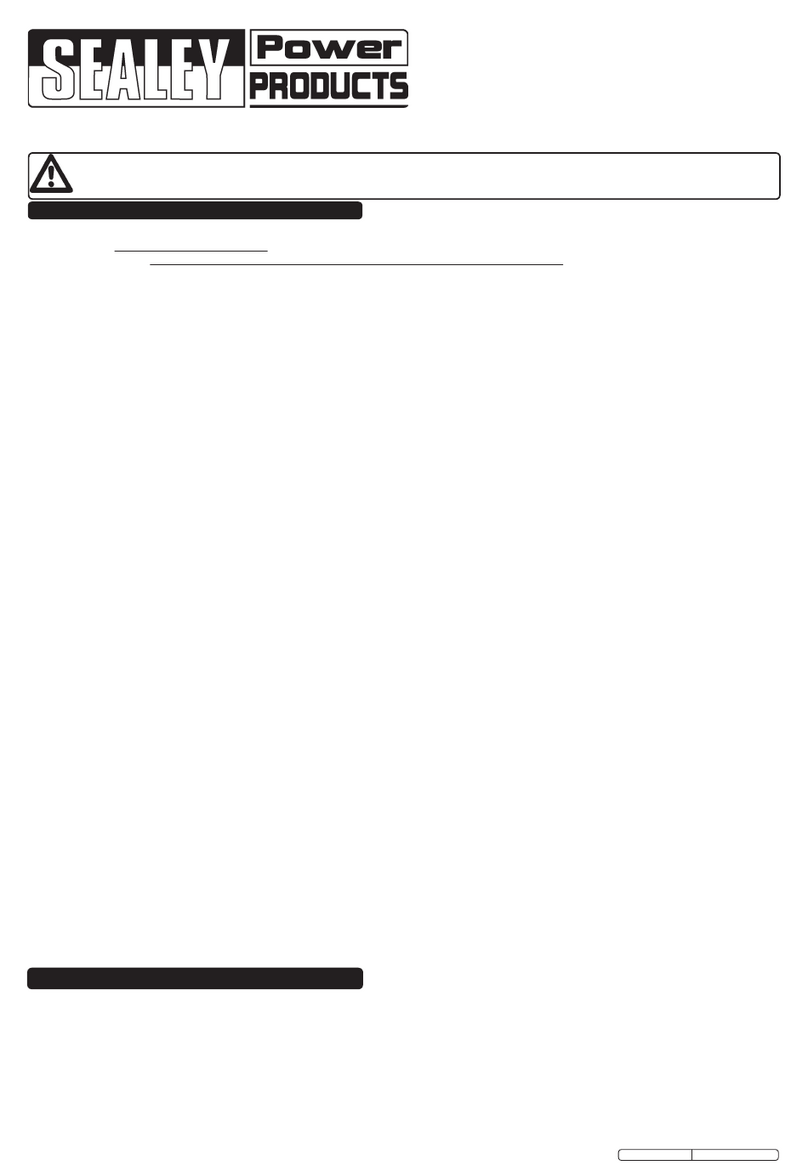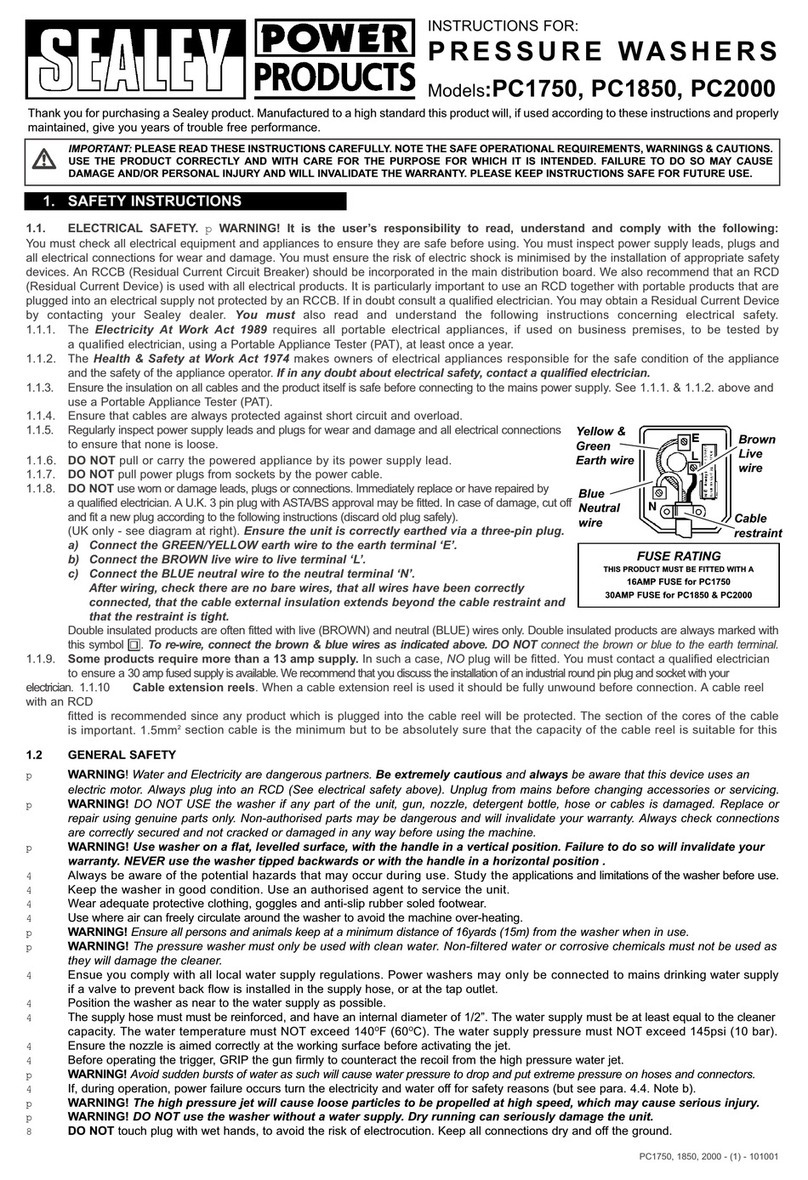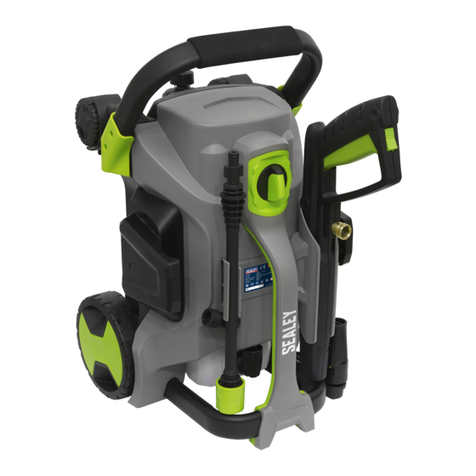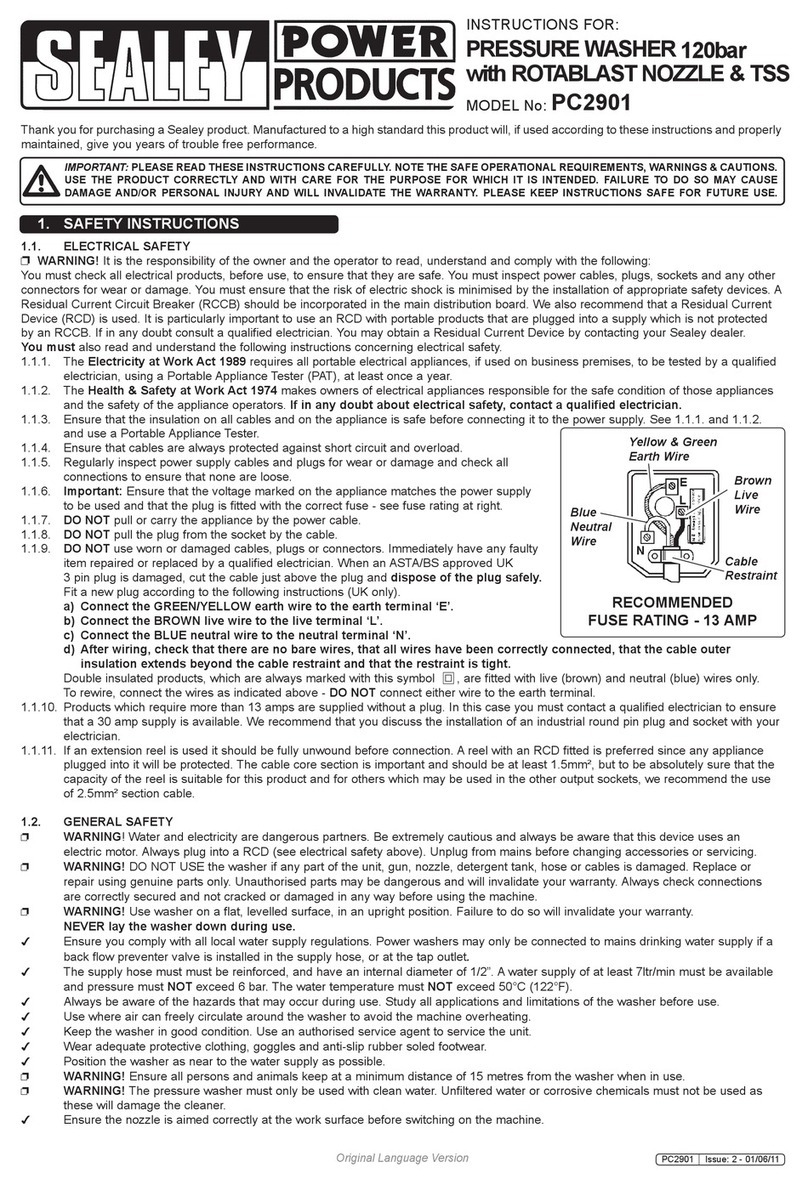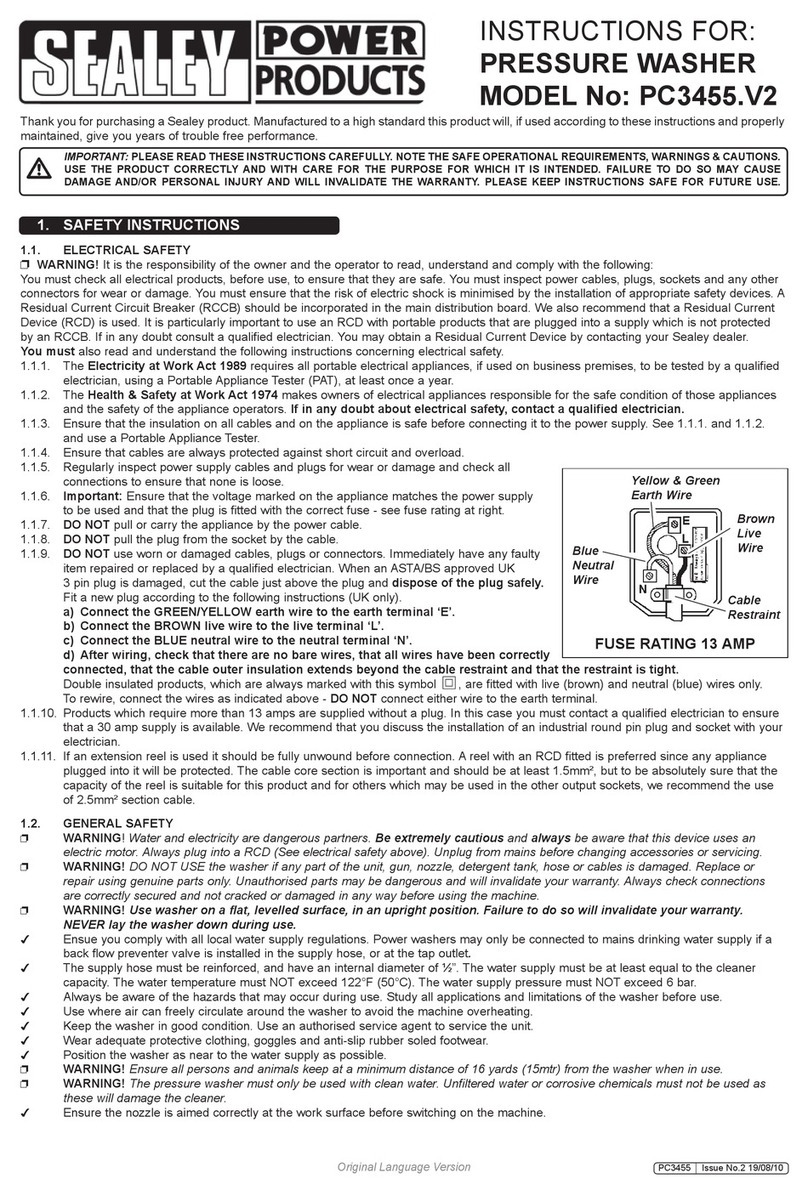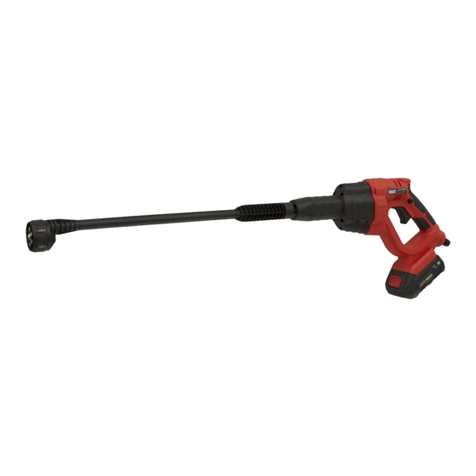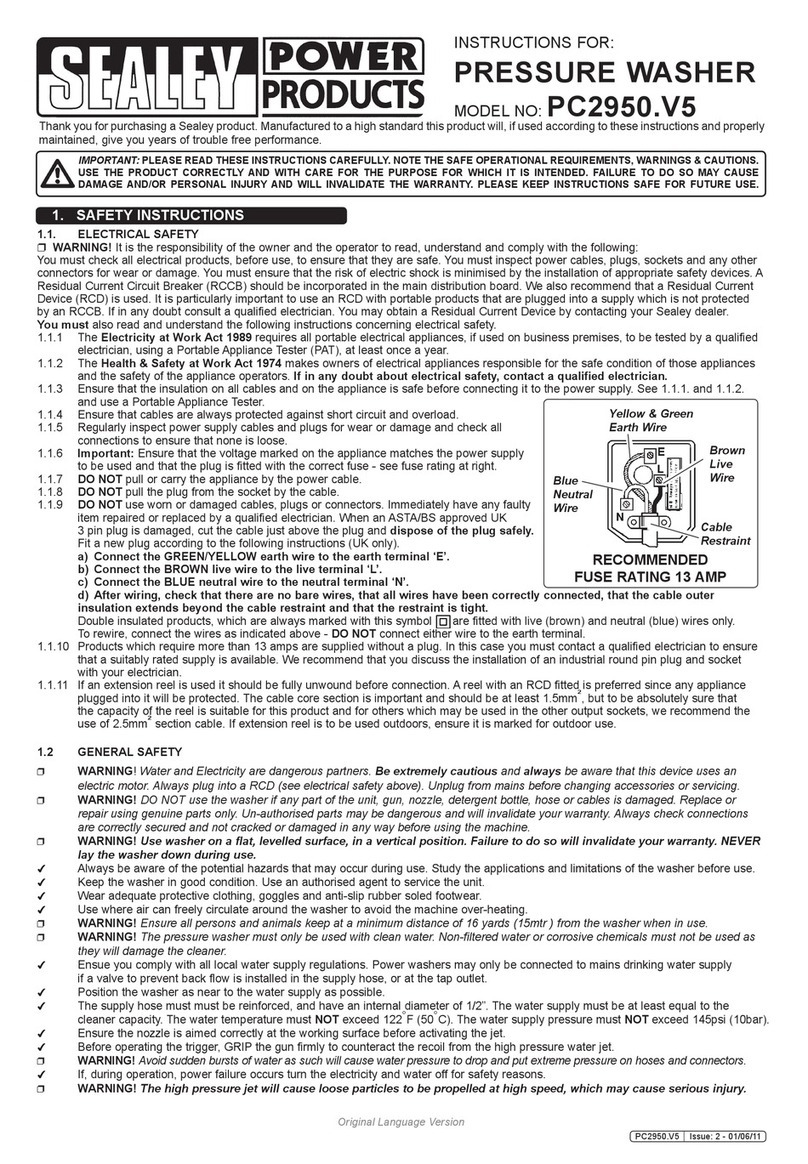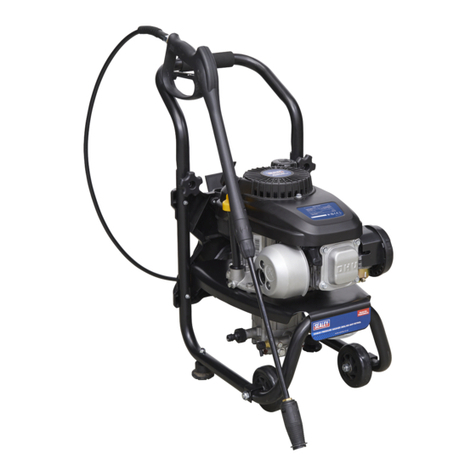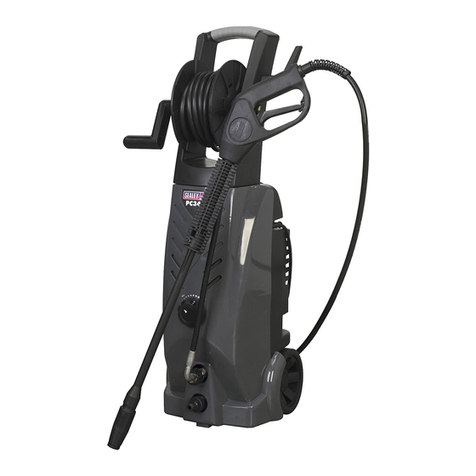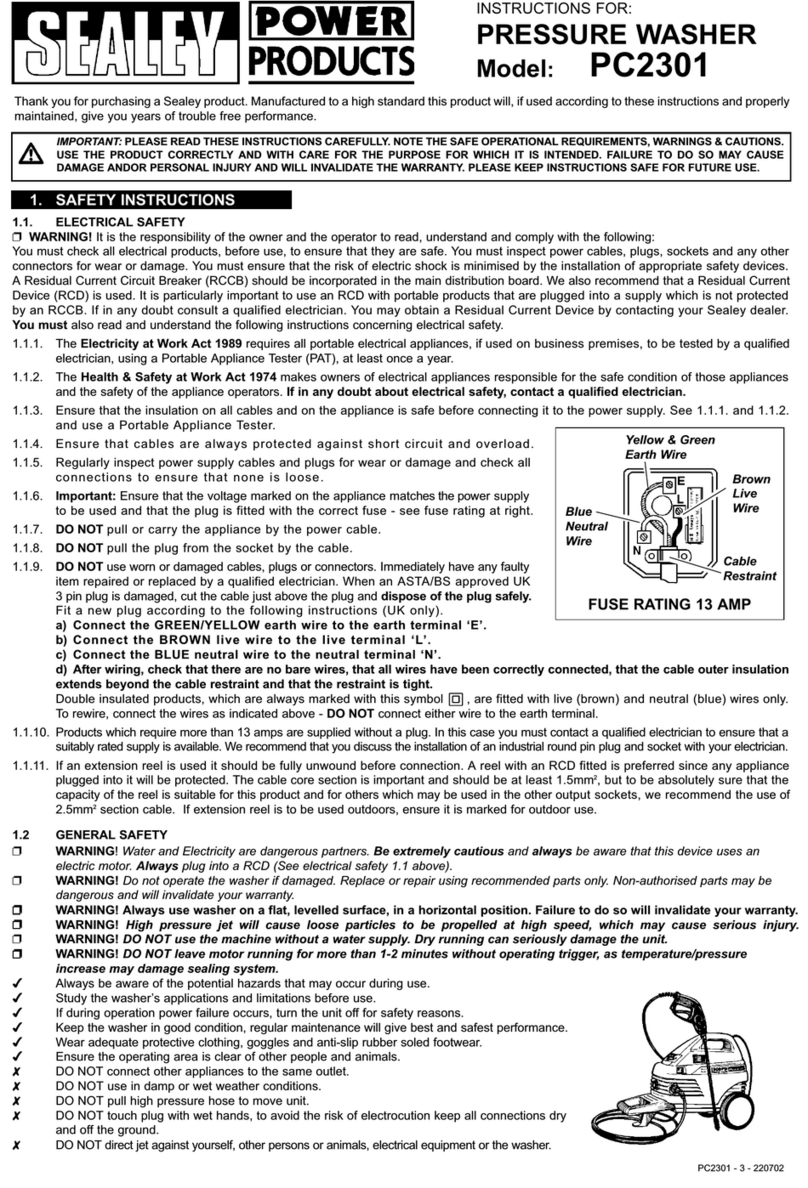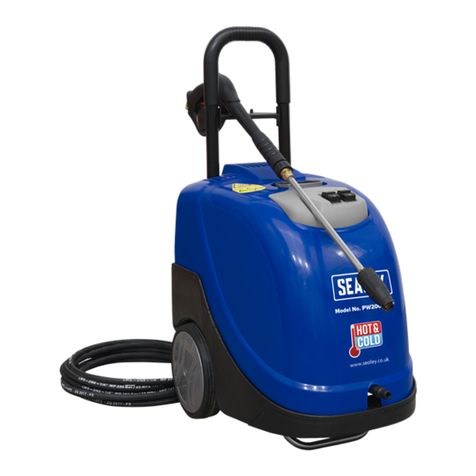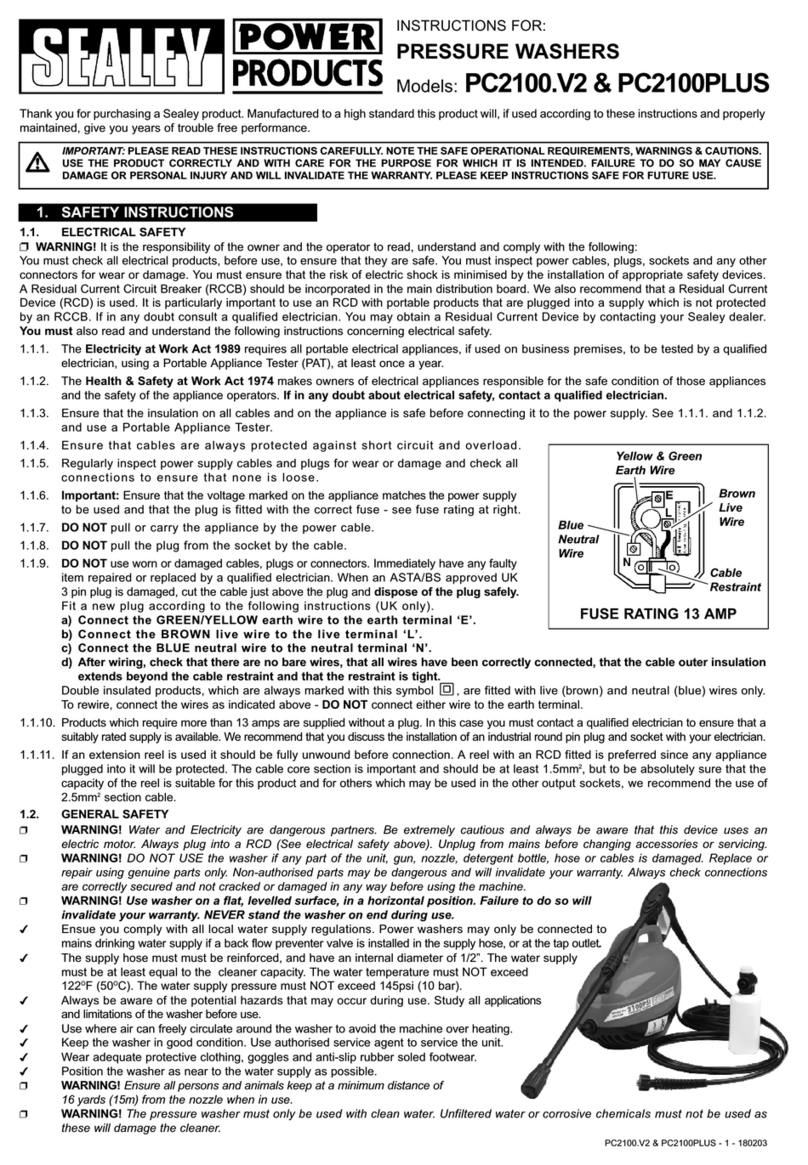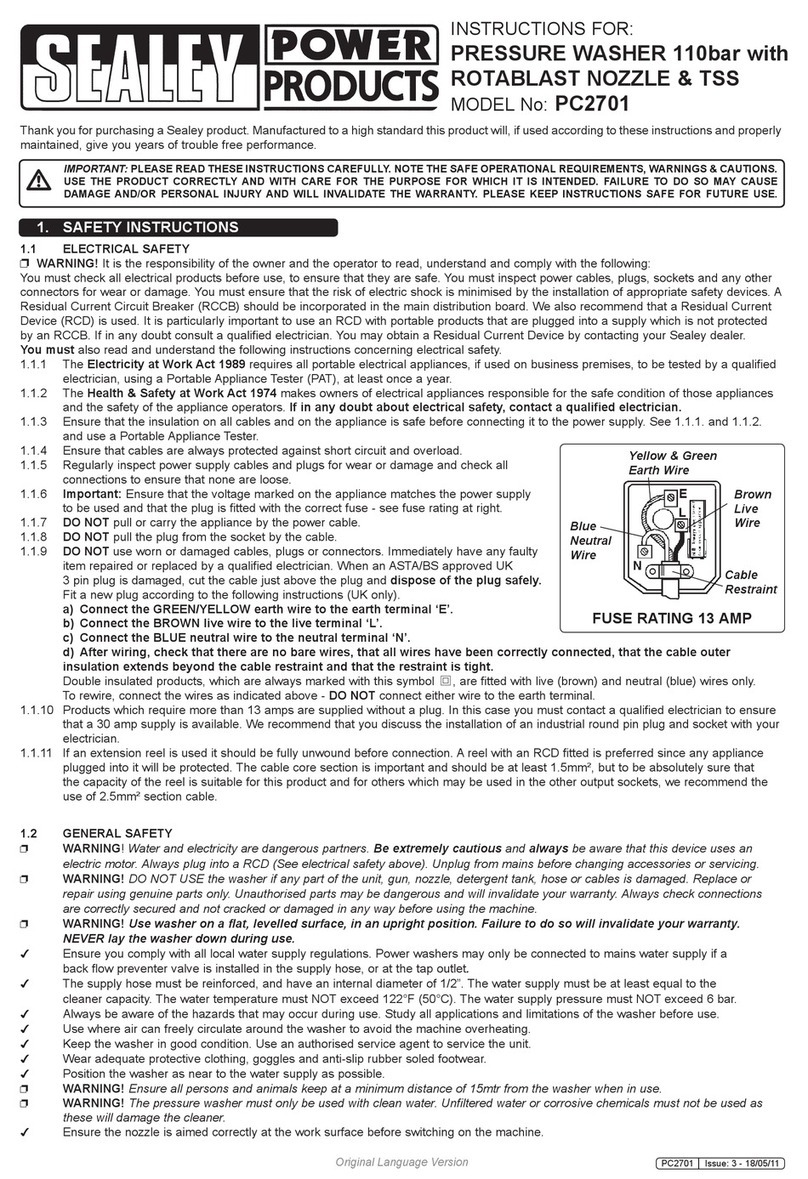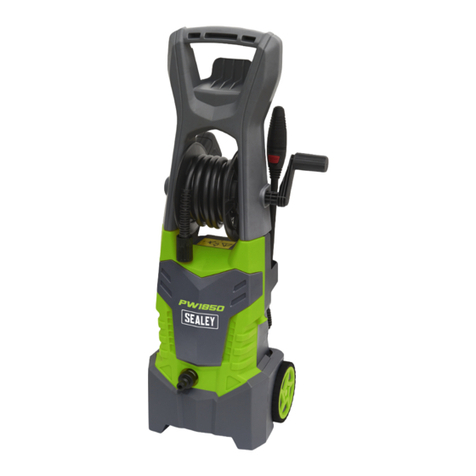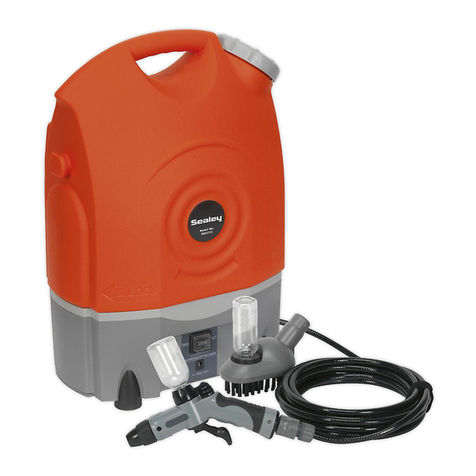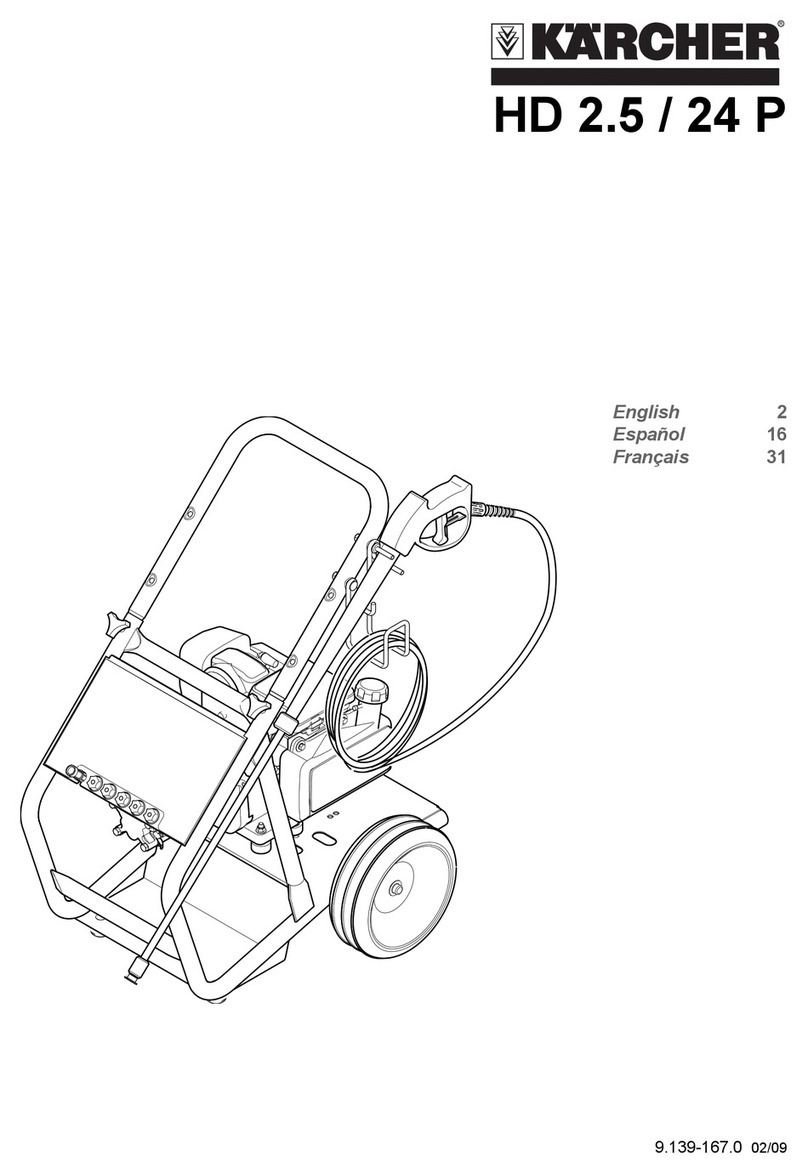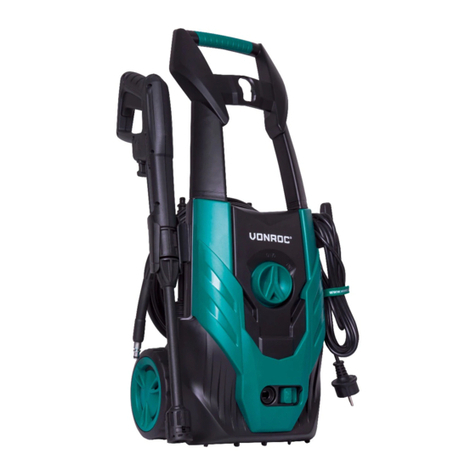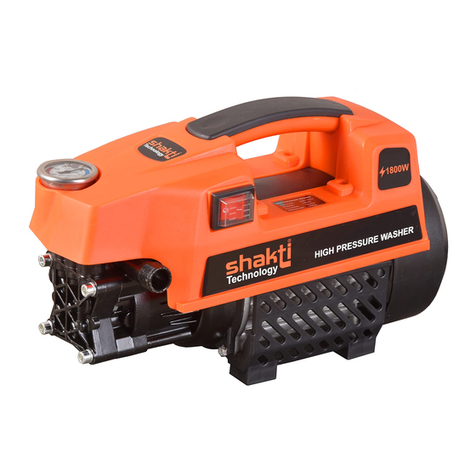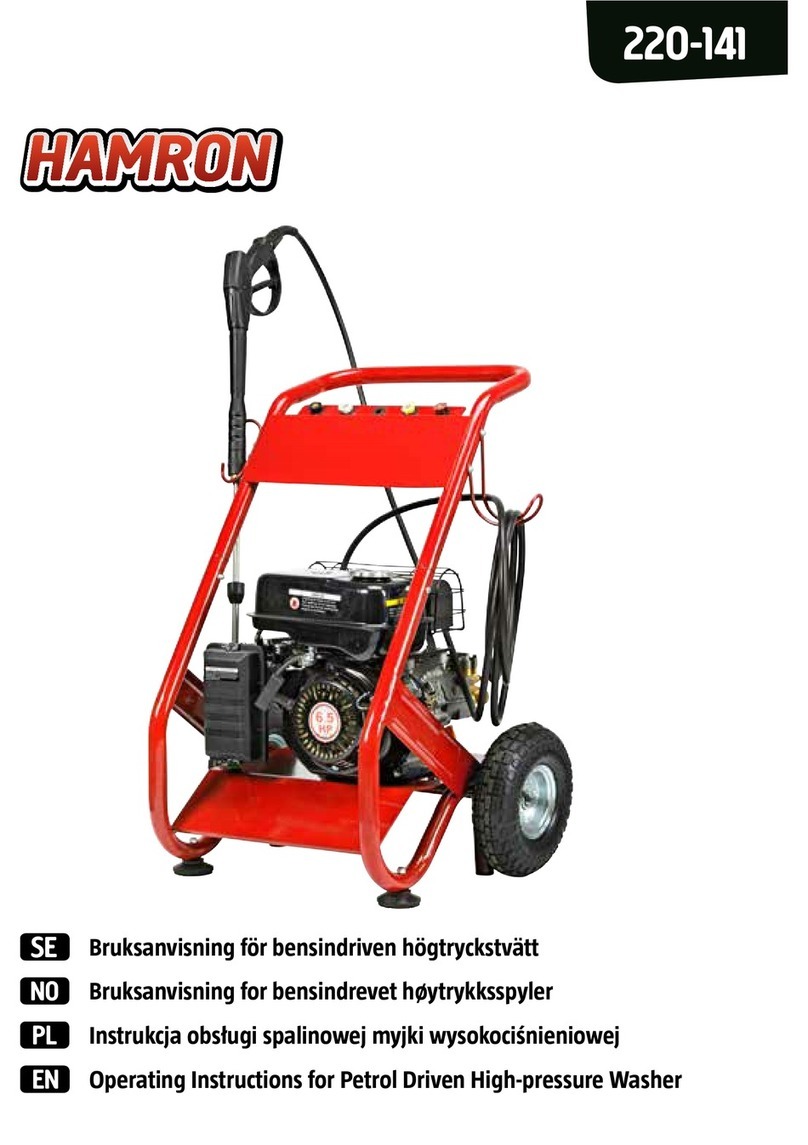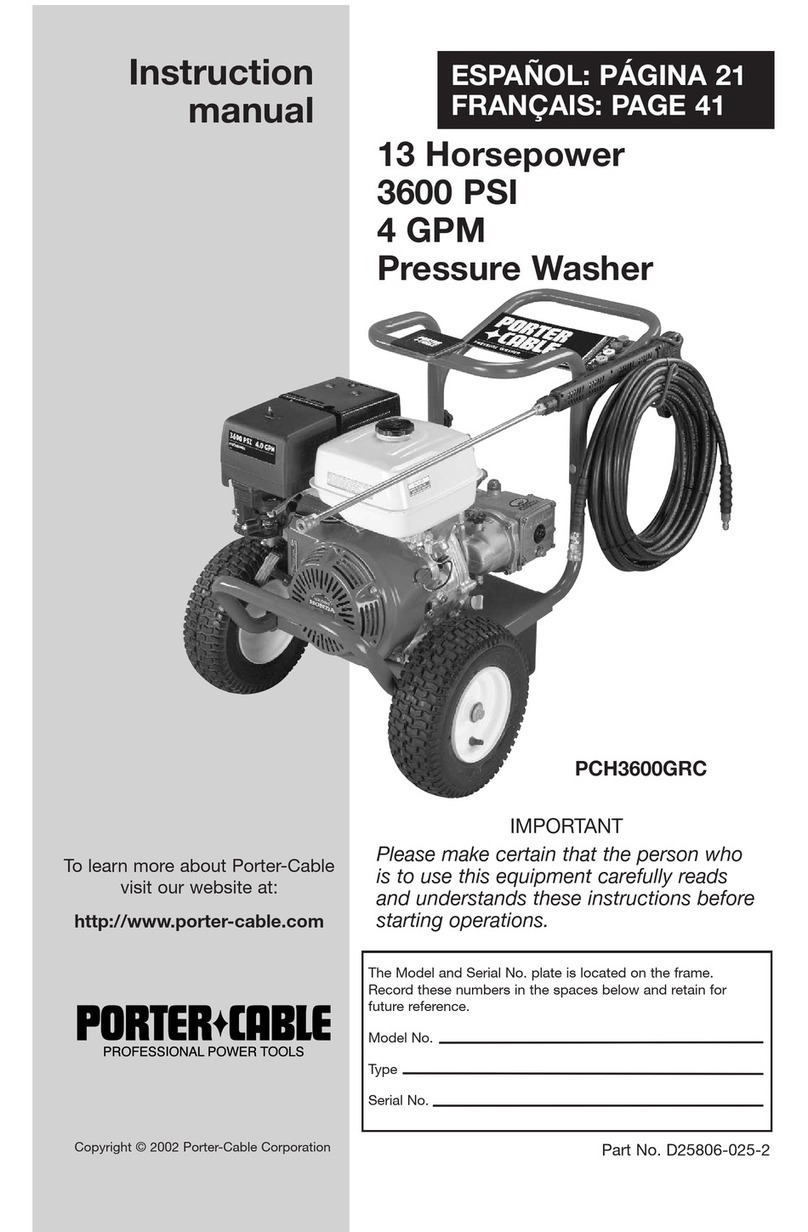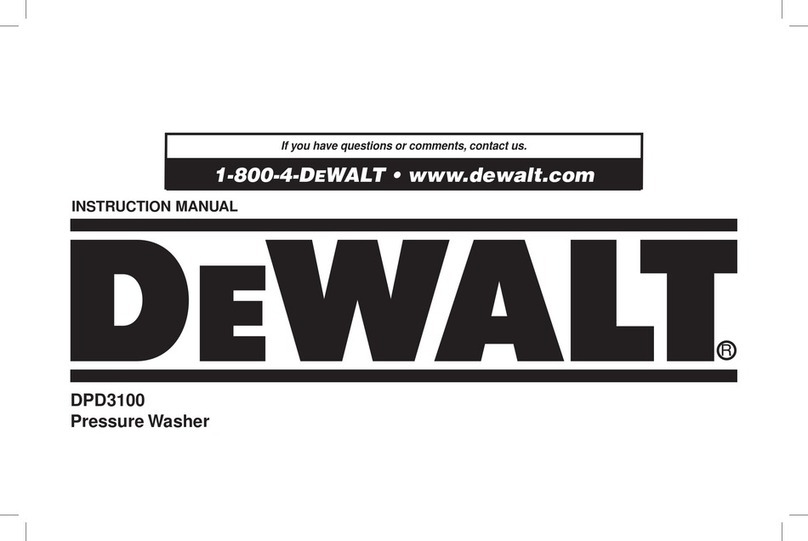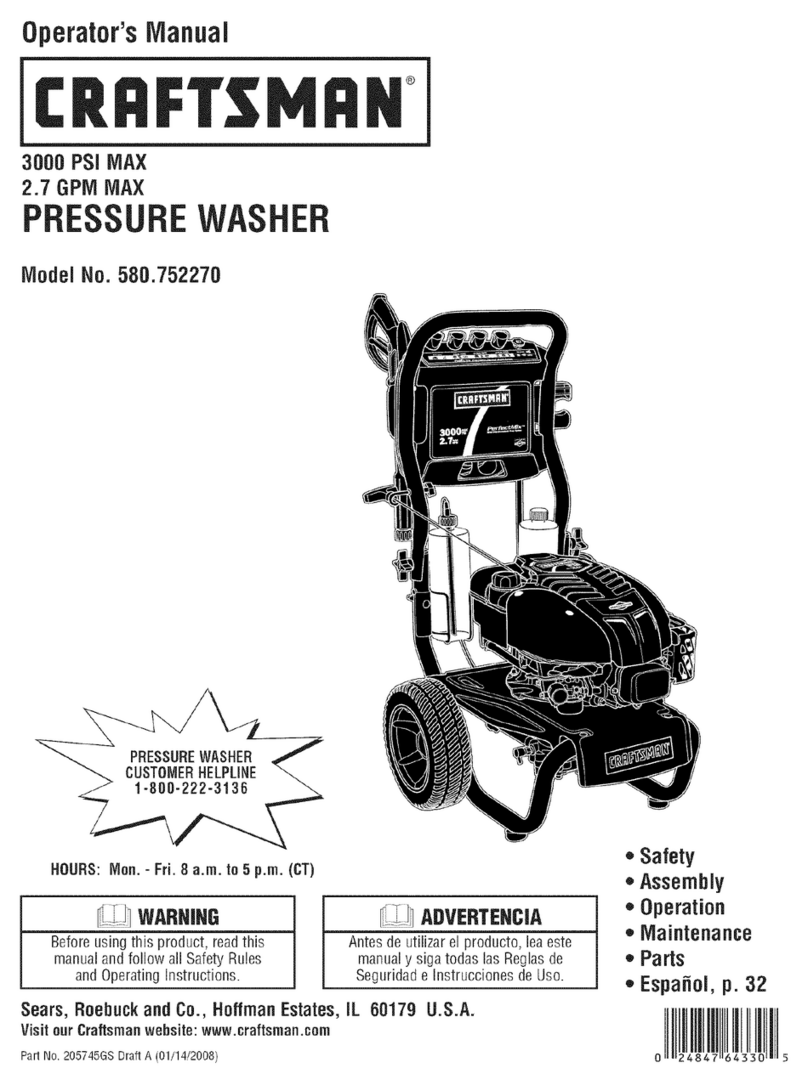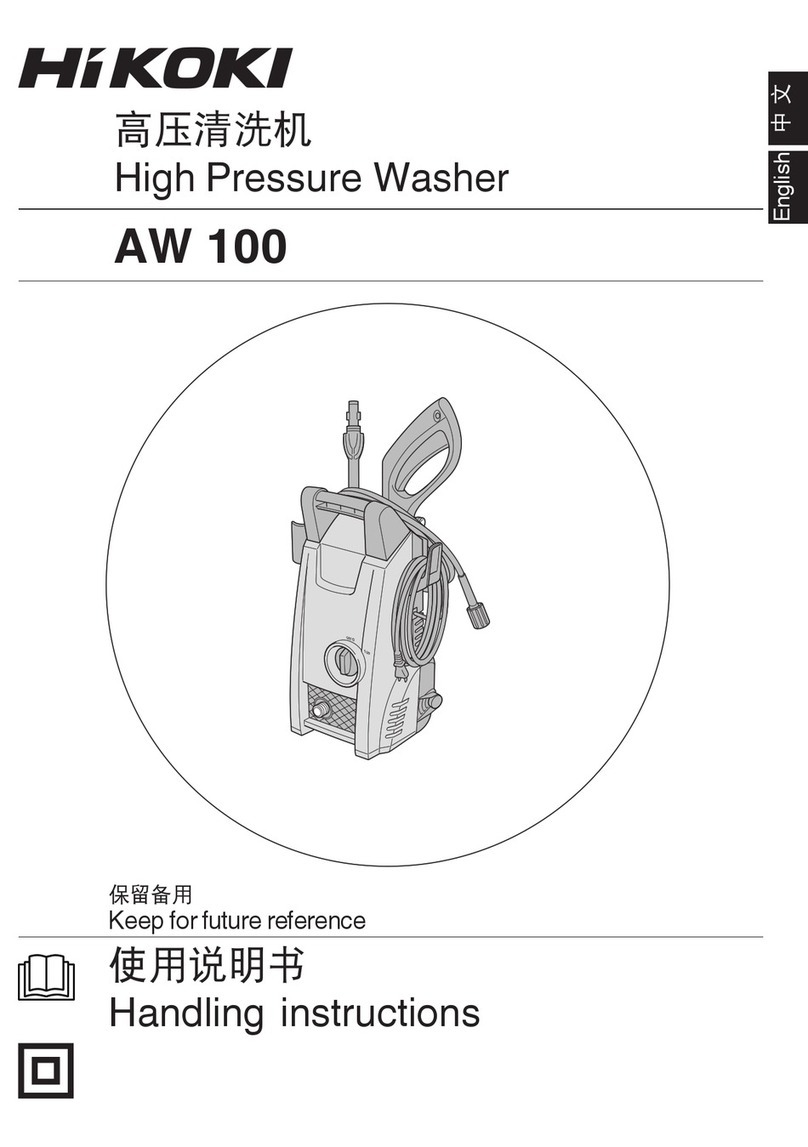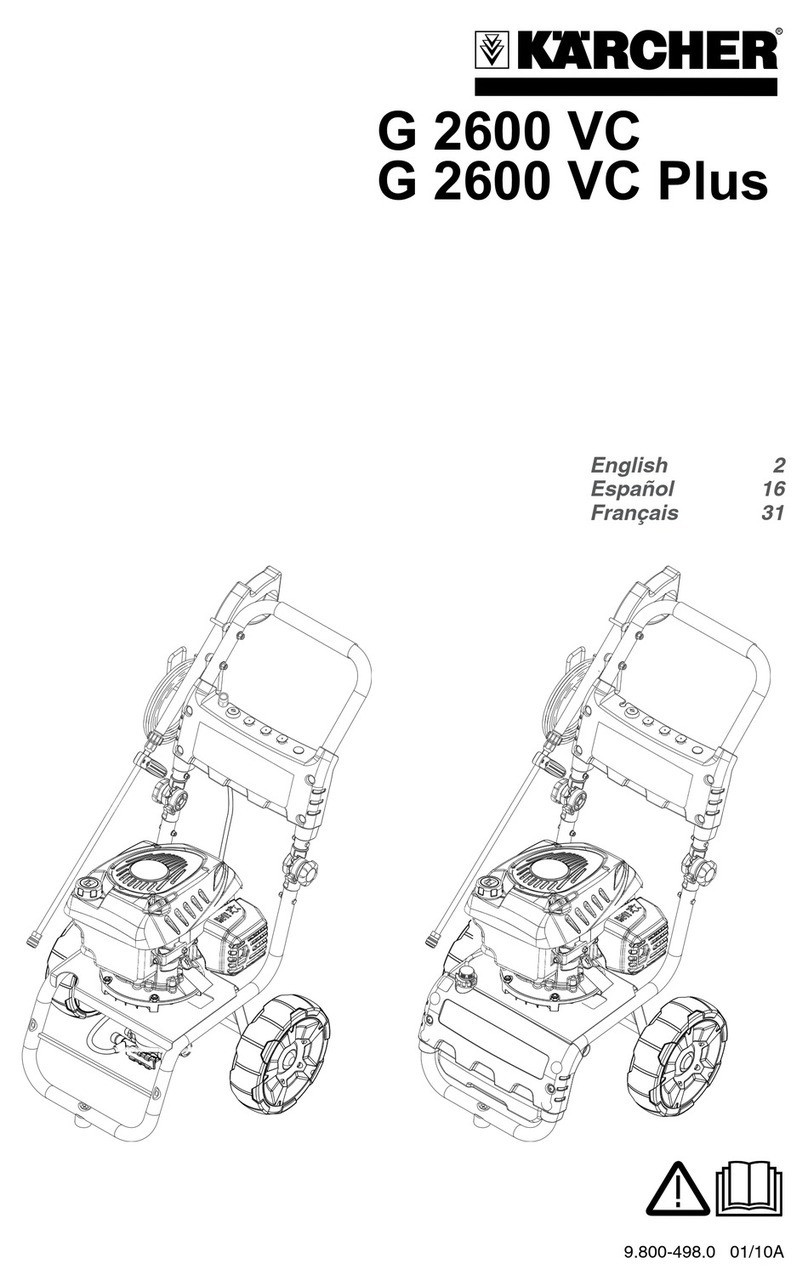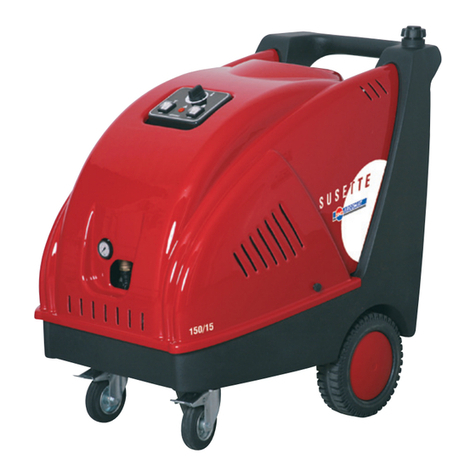
INSTRUCTIONS FOR:
PRESSURE WASHER 95bar with
ROTABLAST NOZZLE & TSS
MODEL No.: PC2351
1.1. ELECTRICAL SAFETY
WARNING! It is the responsibility of the owner and the operator to read, understand and comply with the following:
You must check all electrical products before use, to ensure that they are safe. You must inspect power cables, plugs, sockets and any other
connectors for wear or damage. You must ensure that the risk of electric shock is minimised by the installation of appropriate safety devices. A
Residual Current Circuit Breaker (RCCB) should be incorporated in the main distribution board. We also recommend that a Residual Current
Device (RCD) is used. It is particularly important to use an RCD with portable products that are plugged into a supply which is not protected
by an RCCB. If in any doubt consult a qualified electrician. You may obtain a Residual Current Device by contacting your Sealey dealer.
You must also read and understand the following instructions concerning electrical safety.
1.1.1. The Electricity at Work Act 1989 requires all portable electrical appliances, if used on business premises, to be tested by a qualified
electrician, using a Portable Appliance Tester (PAT), at least once a year.
1.1.2. The Health & Safety at Work Act 1974 makes owners of electrical appliances responsible for the safe condition of those appliances
and the safety of the appliance operators. If in any doubt about electrical safety, contact a qualified electrician.
1.1.3. Ensure that the insulation on all cables and on the appliance is safe before connecting it to the power supply. See 1.1.1. and 1.1.2.
and use a Portable Appliance Tester.
1.1.4. Ensure that cables are always protected against short circuit and overload.
1.1.5. Regularly inspect power supply cables and plugs for wear or damage and check all
connections to ensure that none are loose.
1.1.6. Important: Ensure that the voltage marked on the appliance matches the power supply
to be used and that the plug is fitted with the correct fuse - see fuse rating at right.
1.1.7. DO NOT pull or carry the appliance by the power cable.
1.1.8. DO NOT pull the plug from the socket by the cable.
1.1.9. DO NOT use worn or damaged cables, plugs or connectors. Immediately have any faulty
item repaired or replaced by a qualified electrician. When an ASTA/BS approved UK
3 pin plug is damaged, cut the cable just above the plug and dispose of the plug safely.
Fit a new plug according to the following instructions (UK only).
a) Connect the GREEN/YELLOW earth wire to the earth terminal ‘E’.
b) Connect the BROWN live wire to the live terminal ‘L’.
c) Connect the BLUE neutral wire to the neutral terminal ‘N’.
d) After wiring, check that there are no bare wires, that all wires have been correctly connected, that the cable outer
insulation extends beyond the cable restraint and that the restraint is tight.
Double insulated products, which are always marked with this symbol , are fitted with live (brown) and neutral (blue) wires only.
To rewire, connect the wires as indicated above - DO NOT connect either wire to the earth terminal.
1.1.10. Products which require more than 13 amps are supplied without a plug. In this case you must contact a qualified electrician to ensure
that a 30 amp supply is available. We recommend that you discuss the installation of an industrial round pin plug and socket with your
electrician.
1.1.11. If an extension reel is used it should be fully unwound before connection. A reel with an RCD fitted is preferred since any appliance
plugged into it will be protected. The cable core section is important and should be at least 1.5mm², but to be absolutely sure that
the capacity of the reel is suitable for this product and for others which may be used in the other output sockets, we recommend the
use of 2.5mm² section cable.
FUSE RATING 13 AMP
1.2. GENERAL SAFETY
WARNING! Water and electricity are dangerous partners. Be extremely cautious and always be aware that this device uses an
electric motor. Always plug into a RCD (See electrical safety above). Unplug from mains before changing accessories or servicing.
WARNING! DO NOT USE the washer if any part of the unit, gun, nozzle, detergent tank, hose or cables is damaged. Replace or
repair using genuine parts only. Unauthorised parts may be dangerous and will invalidate your warranty. Always check connections
are correctly secured and not cracked or damaged in any way before using the machine.
WARNING! Use washer on a flat, levelled surface, in an upright position. Failure to do so will invalidate your warranty.
NEVER lay the washer down during use.
Ensure you comply with all local water supply regulations. Power washers may only be connected to mains water supply if a
back flow preventer valve is installed in the supply hose, or at the tap outlet.
The supply hose must be reinforced, and have an internal diameter of 1/2”. The water supply must be at least equal to the
cleaner capacity. The water temperature must NOT exceed 122°F (50°C). The water supply pressure must NOT exceed 6 bar.
Always be aware of the hazards that may occur during use. Study all applications and limitations of the washer before use.
Use where air can freely circulate around the washer to avoid the machine overheating.
Keep the washer in good condition. Use an authorised service agent to service the unit.
Wear adequate protective clothing, goggles and anti-slip rubber soled footwear.
Position the washer as near to the water supply as possible.
WARNING! Ensure all persons and animals keep at a minimum distance of 15mtr from the washer when in use.
WARNING! The pressure washer must only be used with clean water. Unfiltered water or corrosive chemicals must not be used as
these will damage the cleaner.
Ensure the nozzle is aimed correctly at the work surface before switching on the machine.
Before activating the trigger, GRIP the gun firmly to counteract the recoil from the high pressure water jet.
WARNING! Avoid sudden bursts of water as these will cause water pressure to drop and put extreme pressure on hoses and
connectors.
Thank you for purchasing a Sealey product. Manufactured to a high standard this product will, if used according to these instructions and properly
maintained, give you years of trouble free performance.
IMPORTANT: PLEASE READ THESE INSTRUCTIONS CAREFULLY. NOTE THE SAFE OPERATIONAL REQUIREMENTS, WARNINGS & CAUTIONS.
USE THE PRODUCT CORRECTLY AND WITH CARE FOR THE PURPOSE FOR WHICH IT IS INTENDED. FAILURE TO DO SO MAY CAUSE
DAMAGE AND/OR PERSONAL INJURY AND WILL INVALIDATE THE WARRANTY. PLEASE KEEP INSTRUCTIONS SAFE FOR FUTURE USE.
1. SAFETY INSTRUCTIONS
Blue
Neutral
Wire
Yellow & Green
Earth Wire
Cable
Restraint
Brown
Live
Wire
Original Language Version PC2351 Issue: 1 - 28/05/10
